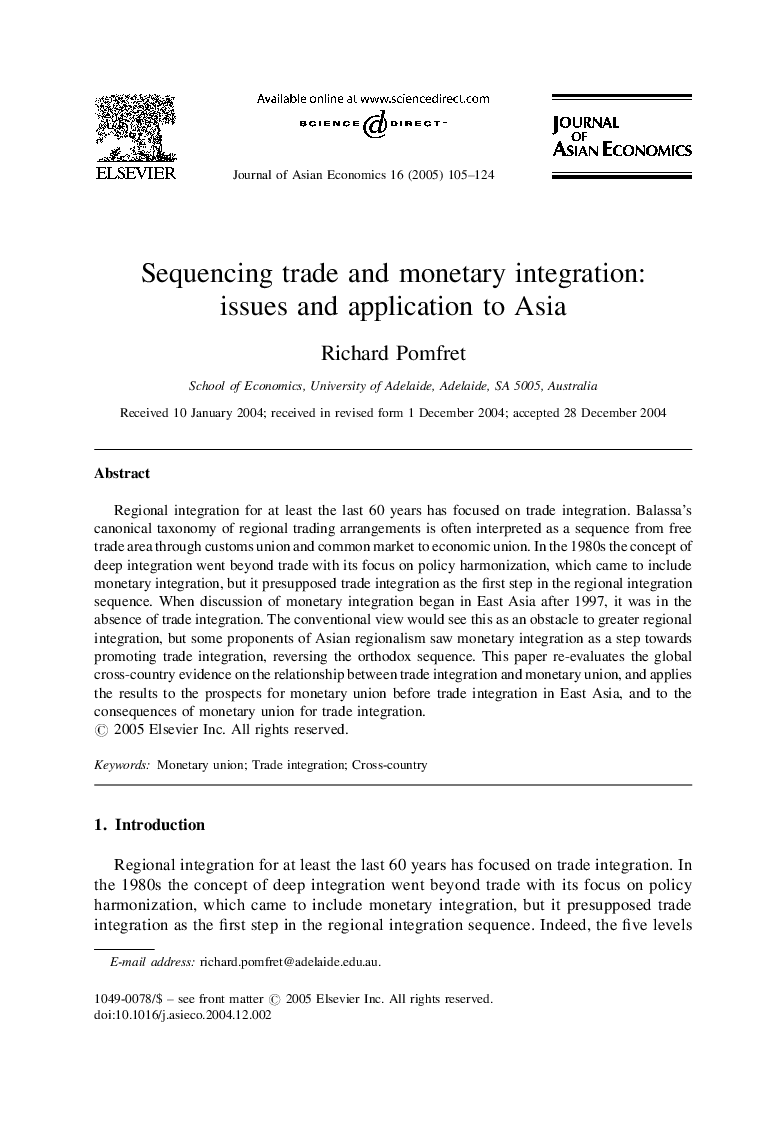| Article ID | Journal | Published Year | Pages | File Type |
|---|---|---|---|---|
| 9553566 | Journal of Asian Economics | 2005 | 20 Pages |
Abstract
Regional integration for at least the last 60 years has focused on trade integration. Balassa's canonical taxonomy of regional trading arrangements is often interpreted as a sequence from free trade area through customs union and common market to economic union. In the 1980s the concept of deep integration went beyond trade with its focus on policy harmonization, which came to include monetary integration, but it presupposed trade integration as the first step in the regional integration sequence. When discussion of monetary integration began in East Asia after 1997, it was in the absence of trade integration. The conventional view would see this as an obstacle to greater regional integration, but some proponents of Asian regionalism saw monetary integration as a step towards promoting trade integration, reversing the orthodox sequence. This paper re-evaluates the global cross-country evidence on the relationship between trade integration and monetary union, and applies the results to the prospects for monetary union before trade integration in East Asia, and to the consequences of monetary union for trade integration.
Related Topics
Social Sciences and Humanities
Economics, Econometrics and Finance
Economics and Econometrics
Authors
Richard Pomfret,
